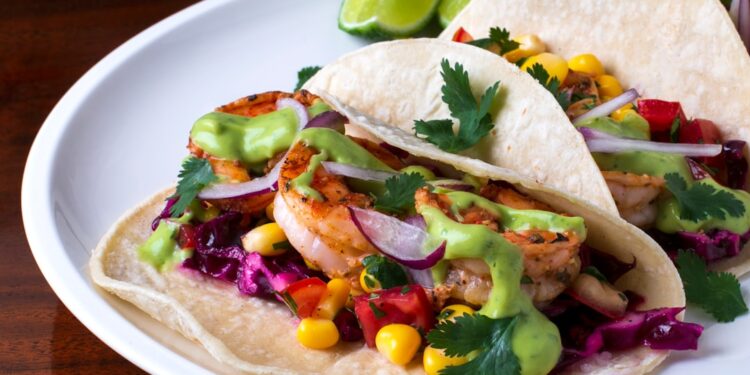Spices have been an essential part of cooking for centuries, not only for adding flavor but also for their medicinal properties. From cinnamon to cumin, each spice has its own unique taste and health benefits. However, many people are intimidated by the thought of cooking with spices, fearing that they may use them incorrectly or that they will overpower the dish. In reality, cooking with spices can be a fun and rewarding experience that can elevate your dishes to the next level.
In this ultimate guide to cooking with spices, we will explore everything you need to know about using spices in your cooking, from how to store them to how to combine them for maximum flavor. By the end of this guide, you will be a spice pro, ready to experiment and create delicious dishes that will impress your family and friends.
1. Understanding the Basics of Spices:
Spices are derived from plants, such as seeds, bark, roots, and fruits, and are used to flavor dishes. They are generally divided into two categories: mild and strong spices. Mild spices, such as cinnamon and nutmeg, add subtle flavors to dishes, while strong spices, such as cumin and chili powder, add a bold kick. When cooking with spices, it’s important to use them in moderation to avoid overpowering the dish.
2. Storing Spices:
To ensure that your spices retain their flavor and potency, it’s essential to store them properly. Spices should be stored in a cool, dark place, away from heat and humidity. They should also be stored in airtight containers to prevent them from losing their flavor. It’s also a good idea to label your spices with their expiration dates to ensure that you are using them at their peak freshness.
3. Buying Spices:
When buying spices, it’s best to purchase them in small quantities to ensure that they are fresh. Whole spices, such as cinnamon sticks and whole peppercorns, have a longer shelf life than ground spices and can be ground as needed. It’s also a good idea to buy spices from a reputable source, as quality can vary greatly among different brands.
4. Grinding Spices:
If you are using whole spices, you will need to grind them before using them in your dishes. This can be done using a mortar and pestle, a spice grinder, or a coffee grinder. Grinding your own spices allows you to control the texture and intensity of the spice, giving you more control over the final flavor of your dish.
5. Combining Spices:
One of the most exciting aspects of cooking with spices is experimenting with different combinations. Some classic spice blends include curry powder, garam masala, and five-spice powder. However, don’t be afraid to create your own spice mixes by combining spices that complement each other. For example, cinnamon, nutmeg, and cloves make a delicious combination for baking, while cumin, coriander, and paprika are perfect for adding flavor to savory dishes.
6. Using Spices in Cooking:
Spices should be added at different stages of cooking to maximize their flavor. Whole spices, such as cinnamon sticks and bay leaves, can be added at the beginning of cooking to infuse the dish with their flavor. Ground spices, on the other hand, should be added towards the end of cooking to prevent them from losing their potency. It’s also a good idea to toast your spices before adding them to your dish, as this can intensify their flavor.
7. Balancing Spices:
When cooking with spices, it’s important to strike a balance between the different flavors. Some spices, such as cinnamon and cloves, are sweet and aromatic, while others, such as cumin and chili powder, are spicy and pungent. By combining different spices, you can create a complex and well-rounded flavor profile that will elevate your dishes to the next level.
8. Pairing Spices with Ingredients:
Certain spices pair well with specific ingredients, enhancing their flavor and creating a harmonious combination. For example, cinnamon and nutmeg are perfect for baking with apples and pears, while cumin and coriander are ideal for seasoning meats and vegetables. It’s a good idea to experiment with different spice and ingredient pairings to find what works best for your palate.
9. Using Spices in Different Cuisines:
Spices are an essential component of many cuisines around the world, adding depth and complexity to dishes. Indian cuisine, for example, is known for its use of spices such as turmeric, cardamom, and cumin, while Mexican cuisine relies on spices like chili powder and cumin. By exploring different cuisines, you can expand your spice repertoire and create a diverse range of dishes.
10. Final Tips:
– Don’t be afraid to experiment with spices and trust your palate.
– Start with small amounts of spices and adjust to taste.
– Keep an open mind and be willing to try new spice combinations.
– Taste your dishes as you cook to adjust the amount of spices.
– Have fun and enjoy the process of cooking with spices.
In conclusion, cooking with spices is a rewarding experience that can transform your dishes from ordinary to extraordinary. By understanding the basics of spices, storing them properly, and experimenting with different combinations, you can create delicious and flavorful meals that will impress your family and friends. So don’t be afraid to spice up your cooking and unleash your creativity in the kitchen!
Let’s get cooking with spices!














